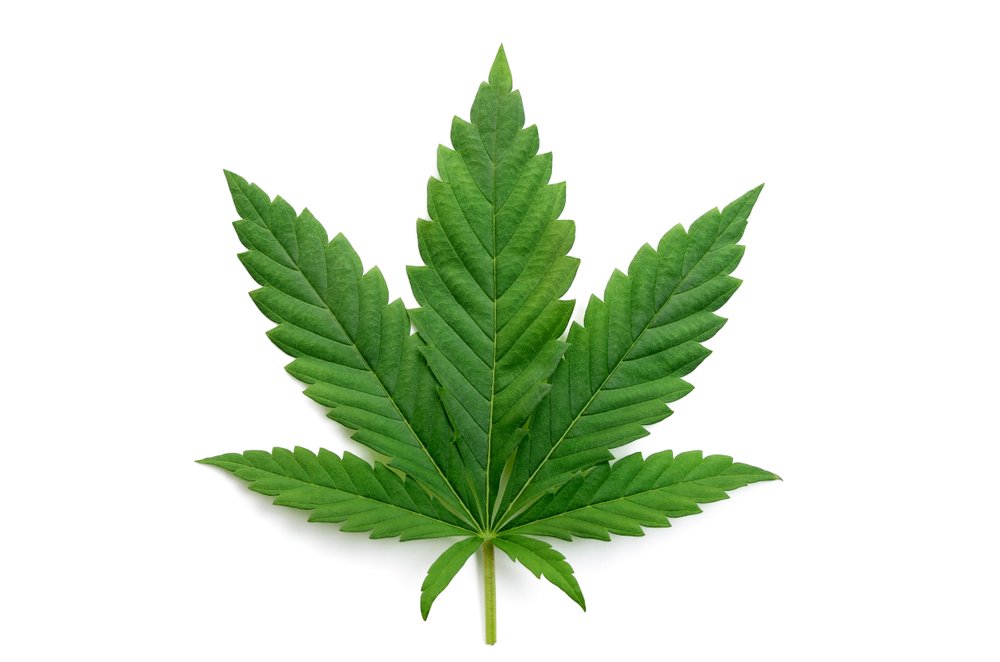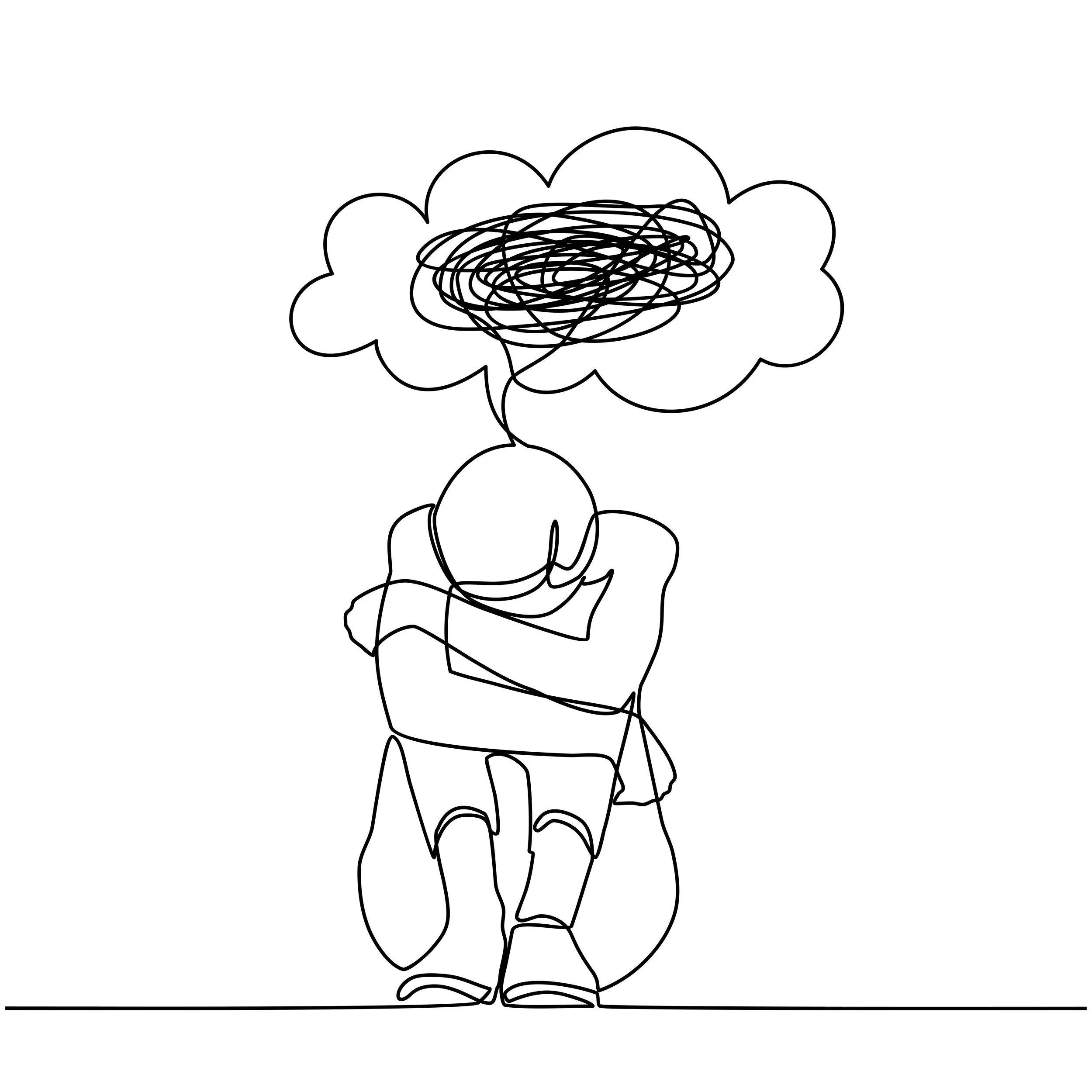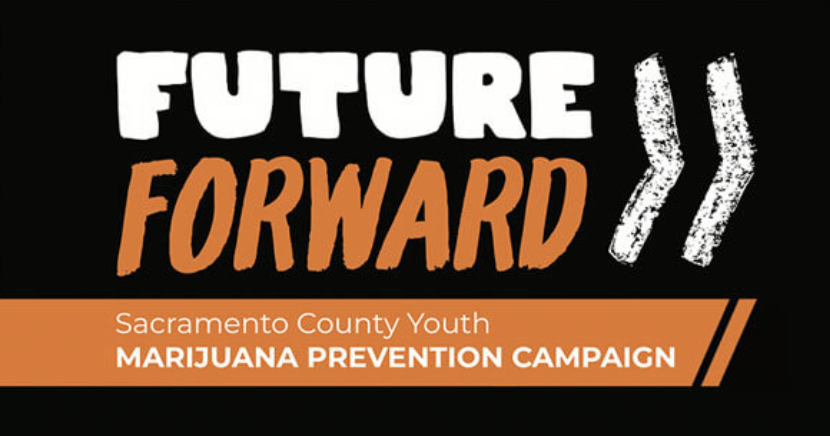Fentanyl Being Found in Black Market Marijuana
Although marijuana is legal in 23 states, it is classified as a Schedule I substance under the federal Controlled Substances Act. This means that it has a high potential for abuse and there are no currently accepted medical treatments in the United States.
Marijuana is a psychoactive drug, produced by the dried flowers, leaves, stems, and seeds of the cannabis sativa plant, which contains over 100 compounds. These compounds include THC, which produces the mind-altering “high,” and CBD. Cannabis is grown in the United States, Canada, Mexico, South America, the Caribbean, and Asia, both indoors and outdoors. (1)
What Is Marijuana?
Marijuana leaf
Marijuana Misuse
Marijuana is the most commonly used illegal substance in the U.S., with overall use growing among all adult age groups and widespread usage among young people. According to the Monitoring the Future survey, marijuana use reached the highest levels ever recorded since 1988. The proportion of young adults who reported past-year marijuana use reached 43% in 2021, a significant increase from 34% in 2016. (2) Additionally, studies suggest people’s risk perception of marijuana use has declined, especially among young people. Only 32 percent of 12th graders recognize the risk of harm from regular marijuana use, the lowest level ever. (3, 4)
Street Names: Aunt Mary, BC Bud, Blunts, Boom, Chronic, Dope, Gangster, Ganja, Grass, Hash, Herb, Hydro, Indo, Joint, Kif, Mary Jane, Mota, Pot, Reefer, Sinsemilla, Skunk, Smoke, Weed, and Yerba.
Marijuana is the most commonly used illegal substance in the U.S., with overall use growing among all adult age groups and widespread usage among young people.
How Is Marijuana Used?
Marijuana can be used in several ways including the following methods:
Smoked in joints (like a cigarette), in blunts (cigars or cigar wrappers that have been filled with marijuana), and in bongs (pipes or water pipes)
Vaped using electronic vaporizing devices (like vape pens) or other vaporizers
Edibles: mixed or infused into foods like cookies, cakes, brownies, or drinks such as tea, cola, or alcohol
Dabbing
Dabbing is when a person inhales highly concentrated forms of THC oils and other extracts from the cannabis plant. The extracts can be in the form of hash or honey oil, wax or budder, or shatter (an amber-colored solid). The high dose of THC delivered to the body through dabbing makes the practice particularly risky and has sent individuals to emergency departments. (2, 5) Teenage use of dabbing has increased and a recent study at the University of Southern California suggests that “of all the ways adolescents experiment with cannabis, ‘dabbing’ cannabis concentrate is the method most likely to lead to ongoing and increasingly frequent use.” (6)
Teenage use of dabbing has increased and a recent study at the University of Southern California suggests that “of all the ways adolescents experiment with cannabis, ‘dabbing’ cannabis concentrate is the method most likely to lead to ongoing and increasingly frequent use.” (6)
Effects and Risks of Marijuana Use
How marijuana affects a person depends on several factors, including:
Amount and frequency
Use of marijuana with other substances (e.g., alcohol or other drugs)
How marijuana is taken, which can impact potency
Previous experience with marijuana or other drugs
Biology (e.g., genes, DNA)
Sex (e.g., women may experience more dizziness after using marijuana compared to men) (5)
When marijuana is smoked, the active ingredient THC passes from the lungs into the bloodstream, carrying the mind-altering chemical to the body’s organs, including the brain. In the brain, THC connects to specific sites called cannabinoid receptors on nerve cells and influences the activity of those cells. (1)
Approximately 1 in 10 people who use marijuana will become addicted. When they start before age 18, the rate of addiction rises to 1 in 6. (7)
When marijuana is smoked, the active ingredient THC passes from the lungs into the bloodstream, carrying the mind-altering chemical to the body’s organs, including the brain.
Short-Term Effects
Marijuana use affects the parts of the brain that are connected to memory and learning, decision-making and problem-solving, coordination, emotions, and reaction time. (5) There is also a range of physical effects of marijuana use:
Nausea
Dry mouth
Bloodshot eyes
Reduced inhibition
Merriment
Relaxation
Talkativeness
Disorganized thinking
Restlessness and agitation
Drowsiness
Anxiety and panic attacks
Enhanced sensory perception
Time distortion
Memory impairment
Confusion, delusions, and, in rare cases, hallucinations
Impaired judgment
Reduced coordination
Increased appetite
Increased heart rate and blood pressure
Acute psychosis, including paranoia (1, 5)
Long-Term Effects
Bronchitis, emphysema, asthma (for individuals who smoke marijuana)
Suppression of the immune system
Increased risk of stroke
Increased risk of heart disease
Marijuana use can also impact a person’s mental health – it has been linked to social anxiety, depression, and psychosis, especially for individuals who have pre-existing disorders like schizophrenia. People under the influence of marijuana may also be at greater risk of sexual assault or other criminal acts. (5)
Marijuana is found in the blood of approximately 14 percent of drivers who die in car crashes, often in combination with alcohol or other drugs.
Dependency
Long-term, regular use of marijuana can lead to physical and psychological dependence – approximately 3 in 10 people who use cannabis have marijuana use disorder. Marijuana use disorder is the continued use of cannabis despite impairment in psychological, physical, or social functioning. Individuals who start using marijuana before they are 21 have a higher risk of developing marijuana use disorder. (5)
Signs and symptoms of marijuana use disorder:
Craving, or a strong desire or urge to use cannabis
Inability to successfully quit using marijuana
Marijuana use that interferes with social interactions, such as with family and friends, work- or school-related duties, and other important areas of functioning (8)
Withdrawal
Chronic use of marijuana can lead to withdrawal when a person discontinues use:
Headache
Sweating, fever, chills
Irritability, anger, or aggression
Shakiness/tremors
Nausea and stomach pain
Decreased appetite or weight loss
Sleep disruption
Anxiety
Depression (8)
If you or someone you know needs substance use treatment or support services, call 916.874.9754
Long-term, regular use of marijuana can lead to physical and psychological dependence – approximately 3 in 10 people who use cannabis have marijuana use disorder.
Poisoning
As marijuana is legalized in more states, accidental poisonings in children have risen, as have the number of trips to emergency departments for children, youth, and young adults.
Edibles – food and drink products mixed or infused with marijuana – pose a greater risk of poisoning than smoked marijuana because they are often packaged to look like regular food or candy. In June 2022, the Food and Drug Administration released a consumer alert warning that THC-containing edibles are easily mistaken for products that might appeal to children and recommended that these products be kept in a safe place out of children’s reach. Research in Colorado reported an increase in the number of children, ranging in age from 8 months to 12 years, brought to the emergency room after ingesting medical marijuana products – most had eaten cakes, cookies, or candy that belonged to family members, babysitters, or friends of the family. (9)
Additionally, the potency of some forms of marijuana, like the THC oils inhaled while “dabbing” is often underestimated by teens and young adults, leading to an increase in emergency department visits for those age groups. (10)
Possible signs of marijuana poisoning in children:
Excessive sleepiness
Dizziness
Impaired motor control
Lethargy
Slowed breathing
In case of poisoning,
Call 911 if it’s an emergency and stay with the person until emergency responders arrive.
Call your local poison control center at 1-800-222-1222.
People who begin using marijuana before age 18 are 4 to 7 times more likely than adults to develop problem use.
Marijuana and Youth
Studies suggest that about half of youths aged 12 to 17 said that it would be easy to get marijuana if they wanted some. (7) People who begin using marijuana before age 18 are 4 to 7 times more likely than adults to develop problem use. Developing brains like those in children, teens, and young adults are especially susceptible to the harmful effects of marijuana. Because of its adverse impact on the brain, concern for teen use of marijuana continues, especially because there are still many unknowns about the risks and outcomes of newer practices like dabbing. John Stogner, Ph.D., assistant professor, Department of Criminal Justice and Criminology, the University of North Carolina at Charlotte, stresses being direct and honest with teens and urging them to use caution and refrain from experimenting with new, and potentially more dangerous, methods. (11)
According to the Centers for Disease Control (CDC), cannabis-involved ED visits among young persons under age 25 increased during the COVID-19 pandemic and remain above pre-pandemic levels. Studies suggest that these increases may result from increased use of marijuana as a coping mechanism for pandemic-related stressors, use of highly concentrated THC products, increased availability of cannabis in states with legal marketplaces, and increased accidental ingestions connected with packaging that is appealing or confusing to children. (5)
Consequences
Students who use marijuana tend to get lower grades and are more likely to drop out of high school, compared with their peers who don’t use it.
Research shows IQ can be lowered if marijuana is smoked regularly during the teen years.
Marijuana use also is linked to substance use disorders, including addiction to alcohol and nicotine. (3)
Resources and Toolkits
Intoxicating hemp refers to hemp-derived products that contain psychoactive cannabinoids, such as delta-8 THC, delta-9 THC, and delta-10 THC.
Intoxicating Hemp
Hemp, a variety of the Cannabis sativa plant, is widely known for its industrial and medicinal uses. Intoxicating hemp refers to hemp-derived products that contain psychoactive cannabinoids, such as delta-8 THC, delta-9 THC, and delta-10 THC. Unlike cannabidiol (CBD), which is non-psychoactive, these compounds can alter mood, perception, and cognitive function.
The 2018 Farm Bill removed hemp, which is defined as any part of the Cannabis plant that contains less than .3% of D-9-THC, from the Controlled Substances Act. The intent was to legalize hemp-derived CBD, which is the non-intoxicating substance found in Cannabis. However, the bill created loopholes that made it possible for companies to produce an array of psychoactive products that are non-regulated and sold at convenience stores, gas stations, smoke shops, and other retailers. Underage consumers can buy the products, which are often packaged to look like popular candy, snacks, and energy drinks, increasing the appeal to young people. Manufacturers are using a “derivatives loophole” in the bill to chemically convert hemp-derived CBD into psychoactive cannabinoids, creating products with extremely high doses of forms of THC.
A concern is that these hemp products are particularly appealing and dangerous to kids. Data published in a policy brief for California local governments details an increase in calls to national poison control centers, emergency room visits, and pediatric exposure to cannabinoids related to intoxicating hemp products. In April, Governor Gavin Newsom’s office issued notices to the California Department of Public Health and the California Department of Alcoholic Beverage Control concerning the sale and distribution of illegal hemp products and are working to address the loopholes in the Farm Bill.
(1) Department of Justice & Drug Enforcement Administration. (2020, April). Drug Fact Sheet: Marijuana/Cannabis. https://www.dea.gov/sites/default/files/2020-06/Marijuana-Cannabis-2020_0.pdf
(2) National Institutes of Health. (2022, August 20). Marijuana and hallucinogen use among young adults reached all-time high in 2021. https://www.nih.gov/news-events/news-releases/marijuana-hallucinogen-use-among-young-adults-reached-all-time-high-2021#:~:text=The%20proportion%20of%20young%20adults,2016%20and%2017%25%20in%202011.
(3) U.S. Department of Justice & Drug Enforcement Administration. Preventing Marijuana Use Among Youth and Young Adults. https://www.dea.gov/sites/default/files/2018-07/DEA-Marijuana-Prevention-2017-ONLINE.PDF
(4) U.S. Department of Health and Human Services & Substance Abuse and Mental Health Services Administration. (2023, February 27). Know the Risks of Marijuana. https://www.samhsa.gov/marijuana
(5) Centers for Disease Control and Prevention. (2021, September 9). What We Know About Marijuana. https://www.cdc.gov/marijuana/what-we-know.html
(6) Barrington-Trimis, PhD, J. L., Cho, PhD, J., Ewusi-Boisvert, BA, E., Hasin, PhD, D., Unger, PhD, J. B., Miech, PhD, R. A., & Leventhal, PhD, A. M. (2020, January 24). Risk of Persistence and Progression of Use of 5 Cannabis Products After Experimentation Among Adolescents. JAMA Netw Open, 3(1). doi:10.1001/jamanetworkopen.2019.19792
(7) Substance Abuse and Mental Health Services Administration. Talking With Your Child About Marijuana. https://www.samhsa.gov/sites/default/files/marijuana-brochure-newpics-r15f_508c.pdf
(8) Patel J, Marwaha R. Cannabis Use Disorder. [Updated 2022 Jul 11]. In: StatPearls [Internet]. Treasure Island (FL): StatPearls Publishing; 2023 Jan-. Available from: https://www.ncbi.nlm.nih.gov/books/NBK538131/
(9) Mekonnen, S. (2023). Medical Marijuana Poisoning in Kids. Poison Info. https://www.poison.org/articles/medical-marijuana
(10) Roehler, PhD, D. R., Smith IV, MPH, H., Radhakrishnan, MPH, L., Holland, PhD, K. M., Gates, MSPH, A. L., Vivolo-Kantor, PhD, A. M., & Hoots, PhD1, B. E. (2023, July 14). Cannabis-Involved Emergency Department Visits Among Persons Aged <25 Years Before and During the COVID-19 Pandemic — United States, 2019–2022. Weekly, 72(28), 758–765. https://www.cdc.gov/mmwr/volumes/72/wr/mm7228a1.html
(11) Nierengarten, M. (2016, February). Dabbling in 'dabbing': a potent new delivery system for cannabis poses heightened risks for adolescents who use marijuana. Contemporary Pediatrics, 33(2). https://go.gale.com/ps/i.do?id=GALE%7CA446292442&sid=googleScholar&v=2.1&it=r&linkaccess=abs&issn=87500507&p=AONE&sw=w&userGroupName=oregon_oweb&isGeoAuthType=true&aty=geo








